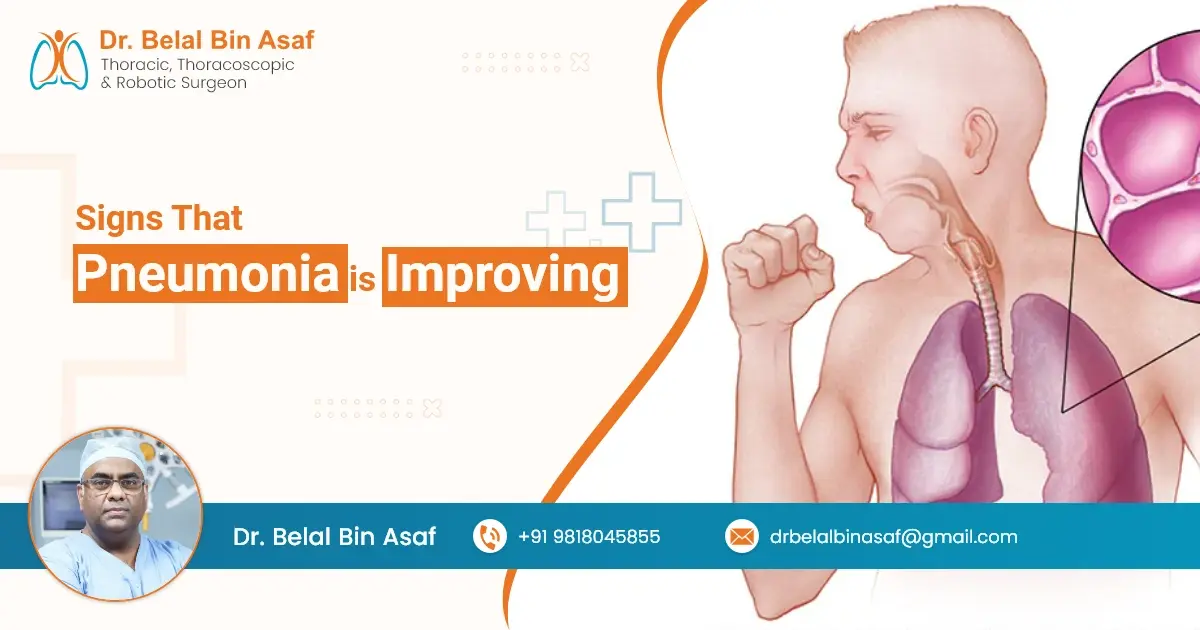Pneumonia is a serious lung infection that can range from mild to severe, and is caused by bacteria, viruses, or fungi. Common symptoms include coughing, shortness of breath, fever, and fatigue. The recovery journey from pneumonia can differ based on the severity of the infection and an individual’s overall health. However, recognizing the signs that pneumonia is improving can help you gauge your progress and ensure that you’re on the right path to recovery.
The good news is that with timely and appropriate medical treatment, most individuals recover fully from pneumonia. However, monitoring your recovery progress is essential to ensure the treatment is effective and complications are avoided. Recognizing the signs that pneumonia is improving is not only reassuring but also helps patients and caregivers stay on the right path during the healing process. Signs that pneumonia is improving typically include a reduction in fever, decreased coughing, improved breathing, increased energy levels, and a better appetite. As the lungs heal, chest pain and mucus production often decrease, and a follow-up chest X-ray may show visible improvements in lung condition. Additionally, a lower white blood cell count and the need for less oxygen therapy are key indicators of recovery. In this blog, we’ll explore these signs of improvement, the factors that influence the healing timeline, and when it’s crucial to consult a healthcare professional for further guidance.
Contents
- 1 How Can I Tell if I Have Pneumonia Versus the Common Cold or the Flu?
- 2 Who Is Most at Risk of Getting Pneumonia?
- 3 Symptoms of Pneumonia in Young Children
- 4 How Can I Prevent Pneumonia?
- 5 Decrease in Fever and Temperature Normalization
- 6 Improved Breathing and Reduced Shortness of Breath
- 7 Reduced Coughing and Mucus Production
- 8 Increased Energy Levels and Reduced Fatigue
- 9 Improved Appetite and Hydration
- 10 Clearer Chest X-ray or Improved Lab Results
- 11 Improved Sleep Patterns
- 12 Decreased Pain or Chest Discomfort
- 13 Regain Strength After Pneumonia
- 14 Conclusion
- 15 FAQ (Frequently Asked Question)
How Can I Tell if I Have Pneumonia Versus the Common Cold or the Flu?
Pneumonia, the common cold, and the flu share some overlapping symptoms, but there are key differences:
- Common Cold:
- Symptoms: Runny nose, sore throat, sneezing, mild cough, mild headache, and body aches.
- Severity: Symptoms are usually mild and improve within 7-10 days.
- Symptoms: Runny nose, sore throat, sneezing, mild cough, mild headache, and body aches.
- Flu:
- Symptoms: Sudden onset of fever, chills, muscle aches, fatigue, sore throat, and cough. Sometimes, body aches and headaches are more intense than with a cold.
- Severity: Symptoms can be moderate to severe, with the potential for complications like pneumonia.
- Symptoms: Sudden onset of fever, chills, muscle aches, fatigue, sore throat, and cough. Sometimes, body aches and headaches are more intense than with a cold.
- Pneumonia:
- Symptoms:
- Chest pain (especially when breathing deeply or coughing)
- Shortness of breath
- Severe cough with green or yellow mucus, or even blood
- High fever and chills
- Fatigue and weakness
- Rapid breathing or heartbeat
- Confusion or disorientation (especially in older adults)
- Chest pain (especially when breathing deeply or coughing)
- Severity: Pneumonia symptoms can develop quickly and are often more severe than those of the cold or flu. You may also feel very unwell and have trouble breathing.
- Symptoms:
If you suspect pneumonia, it’s important to consult a healthcare provider for diagnosis and treatment, especially if you experience difficulty breathing or persistent high fever.













 +91-9818045855
+91-9818045855
